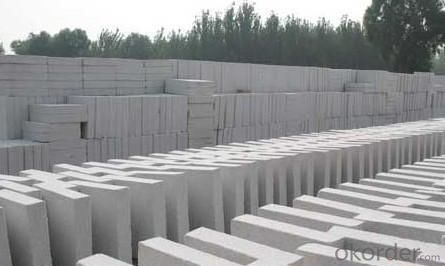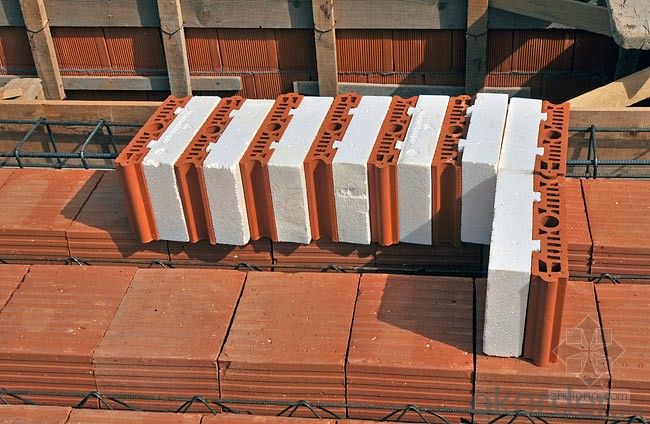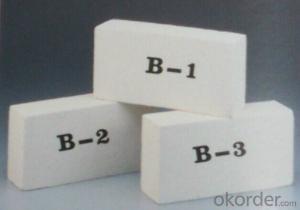Mullita ladrillo refractario refractarios aislantes JM 27
- Loading Port:
- Shanghai
- Payment Terms:
- TT OR LC
- Min Order Qty:
- 5000 kg
- Supply Capability:
- 5000000 kg/month
OKorder Service Pledge
OKorder Financial Service
You Might Also Like
Mullita ladrillo refractario refractarios aislantes JM 23
Aislamiento de calor de la serie okorder ladrillo
La serie okorder ladrillo es un eficaz aislamiento térmico, ahorro de energía, baja en carbono, la protección del medio ambiente avanzado, de acuerdo a la norma ASTM la fabricacion de productos.Okorder serie productos son mejores Li Ning y aislamiento en todo tipo de hornos industriales en el sector metalurgico, aluminio, petroquímica, energía eléctrica y materiales de cerámica de vidrio.Pueden ser utilizados como parte de la capa de aislamiento termico o non - Fusion.Los productos han sido ampliamente utilizados en el horno, logra resultados satisfactorios.
Aplicación de la preservación del calor de ladrillo
Industria metalurgica: Blast Furnace, hot alto horno, horno de calefaccion, etc.
Industria petroquímica: etileno horno horno de cracking, producción de hidrógeno, reformador primario, horno de calefaccion, etc.
Industria: horno de rodillos de cerámica, horno, etc.
Industria del vidrio: vidrio horno regenerador, etc.
Industria de carbono: carbono horno, etc.
Sector de la electrólisis de aluminio: aluminio reducción celular, etc.
Otras industrias: horno de tunel, Servicio de horno, etc.
Ventajas de ladrillo del aislamiento de calor
Baja conductividad térmica: mayor porosidad traerá buen aislamiento termico, ahorro de energía.
Alta resistencia al aplastamiento: alta resistencia al aplastamiento, la estabilidad de volumen.
Almacenamiento de calor: pequeños de almacenamiento de calor bajo para absorber más calor, ahorro de efecto es evidente.
Gao Chundu: hierro, metal alcalino de bajo contenido de impurezas.
El tamaño exacto: tamaño de ladrillo precision de procesamiento, forma especial de corte y molienda, acelerar el ladrillo.
Foto de ladrillo aislante



Problema común soluciones
1.¿Que productos tienes?
Disponemos de todo tipo de ladrillos refractarios, refractarios materiales de fundicion, mortero, cemento, productos de fibra cerámica, etc.
O usted puede hojear nuestros productos a elegir lo que usted necesita.
2.¿Cómo controlar la calidad del producto?
Con sistema de estricto control de calidad en la seleccion de materiales y el proceso de producción, tenemos la calidad de materiales refractarios y productos de fibra cerámica para satisfacer las necesidades de los clientes.
Desde la seleccion de materias primas, la calidad de nuestro control para empezar.El certificado de calidad de la materia prima es necesaria, cada lote de los productos serán probados en el uso de la línea.En el proceso de producción, el control de calidad por los trabajadores, y luego cada pieza de la clasificación, y mediante la supervisión de la calidad y la inspección.
3.¿Me puedes dar una breve introducción a la aplicación de su producto?
Mi empresa se dedica principalmente en refractarios en el acero, cemento, vidrio, cerámica, petroquímica, energía eléctrica y otras industrias.
4.¿Qué información necesitas si te necesito?
Con el fin de seleccionar los productos adecuados, que nos proporcionará la información, tales como los Estados Unidos, datos técnicos, cantidad de pedido, la aplicación del producto, etc.
Si usted tiene alguna pregunta, por favor pongase en contacto con nosotros.
- Q:How do insulating fire bricks help reduce emissions from heating equipment?
- Insulating fire bricks play a significant role in reducing emissions from heating equipment by improving the overall energy efficiency of the system. These bricks are specifically designed to have low thermal conductivity, which means they are excellent at insulating heat and preventing heat loss. When used in heating equipment such as furnaces or boilers, insulating fire bricks help to retain heat within the system, allowing it to reach and maintain higher temperatures more effectively. This increased efficiency results in reduced fuel consumption, as less energy is required to achieve the desired heating levels. By reducing fuel consumption, insulating fire bricks indirectly contribute to lowering emissions. When less fuel is burned to produce the same amount of heat, there is a corresponding decrease in the release of greenhouse gases and other pollutants into the atmosphere. This is particularly important in the context of fossil fuel-based heating systems, which are major contributors to carbon dioxide emissions and air pollution. Furthermore, the use of insulating fire bricks can also lead to improved combustion efficiency. The higher temperatures achieved and maintained within the heating equipment can enhance the combustion process, ensuring a more complete and cleaner burn. This helps to minimize the production of harmful by-products, such as carbon monoxide and nitrogen oxides, which are not only detrimental to the environment but also pose health risks to humans. In summary, insulating fire bricks aid in reducing emissions from heating equipment by enhancing energy efficiency, reducing fuel consumption, and promoting cleaner combustion. By improving the overall performance of heating systems, these bricks contribute to a more sustainable and environmentally friendly approach to heating.
- Q:Can insulating fire bricks be used in the construction of hot air generators?
- Yes, insulating fire bricks can be used in the construction of hot air generators. Insulating fire bricks are designed to withstand high temperatures and provide excellent thermal insulation. This makes them suitable for use in hot air generators, which require insulation to maintain high temperatures and prevent heat loss. Insulating fire bricks help to increase the efficiency and performance of hot air generators by reducing heat transfer to the surroundings. Additionally, these bricks are lightweight, easy to install, and durable, making them a popular choice for various industrial applications including the construction of hot air generators.
- Q:Can insulating fire bricks be used in the construction of pizza ovens?
- Yes, insulating fire bricks can be used in the construction of pizza ovens. These bricks are designed to withstand high temperatures and provide excellent insulation, making them ideal for use in pizza ovens. They can help retain heat efficiently, resulting in a more even and consistent cooking temperature. Insulating fire bricks also have low thermal conductivity, which means they prevent heat loss and ensure the pizza oven remains hot for longer periods, enhancing energy efficiency. Overall, using insulating fire bricks in the construction of pizza ovens can contribute to better heat retention, improved cooking performance, and more energy-efficient operation.
- Q:Do insulating fire bricks expand and contract with temperature changes?
- Yes, insulating fire bricks do expand and contract with temperature changes. Like any material, when exposed to heat, the insulating fire bricks expand, and when cooled, they contract. This expansion and contraction occur due to the thermal expansion coefficient of the material, which determines how much it will expand or contract for a given change in temperature. It is important to consider this property when using insulating fire bricks in applications where temperature fluctuations are expected, as failure to account for the expansion and contraction may lead to structural damage or cracking.
- Q:Are insulating fire bricks suitable for use in glass melting furnaces?
- Insulating fire bricks can be suitable for use in glass melting furnaces, depending on the specific requirements of the furnace and the type of glass being melted. Insulating fire bricks are made from lightweight materials with low thermal conductivity, which makes them effective at retaining heat and reducing energy loss in the furnace. This can help improve the energy efficiency of the furnace and reduce operating costs. However, it is important to consider the temperature and atmosphere inside the glass melting furnace when choosing the type of insulating fire bricks. Glass melting furnaces operate at extremely high temperatures, often exceeding 1500°C (2732°F). Some insulating fire bricks may not be able to withstand such high temperatures and could degrade or even melt under these conditions. Additionally, the atmosphere inside the glass melting furnace can have an impact on the suitability of the insulating fire bricks. Some types of insulating fire bricks may react with certain gases or chemicals present in the furnace atmosphere, leading to degradation or contamination of the glass being melted. Therefore, it is crucial to select insulating fire bricks that are compatible with the specific atmosphere and conditions inside the glass melting furnace. In summary, insulating fire bricks can be suitable for use in glass melting furnaces, but careful consideration must be given to their temperature resistance and compatibility with the furnace atmosphere. Consulting with experts or suppliers who specialize in refractory materials for glass melting furnaces can help ensure the appropriate selection of insulating fire bricks for optimal furnace performance and glass quality.
- Q:Do insulating fire bricks provide sound insulation as well?
- No, insulating fire bricks primarily provide thermal insulation, not sound insulation. Insulating fire bricks are designed to withstand high temperatures and are commonly used in applications such as kilns, furnaces, and fireplaces to prevent heat loss. While they may offer some degree of sound absorption due to their dense composition, they are not specifically designed or effective in reducing sound transmission. If sound insulation is the primary concern, other materials such as acoustic insulation panels or soundproofing materials would be more suitable.
- Q:Are insulating fire bricks suitable for insulation in petrochemical plants?
- Yes, insulating fire bricks are suitable for insulation in petrochemical plants. These bricks are made from lightweight refractory materials and have excellent thermal insulation properties. They can withstand high temperatures and provide insulation against heat transfer, making them ideal for use in petrochemical plants where insulation is crucial for safety and energy efficiency.
- Q:Are insulating fire bricks resistant to freeze-thaw cycles?
- Yes, insulating fire bricks are generally resistant to freeze-thaw cycles. These bricks are designed to withstand extreme temperature changes, including freezing and thawing, without cracking or deteriorating.
- Q:Can insulating fire bricks be used in the construction of lime calciners?
- Yes, insulating fire bricks can be used in the construction of lime calciners. Insulating fire bricks are known for their high heat resistance and low thermal conductivity, making them suitable for applications that require insulation and protection against extreme temperatures. In lime calciners, which are used to heat limestone to produce lime, the use of insulating fire bricks can help maintain the desired temperature inside the calciner while minimizing heat loss to the surroundings.
- Q:Can insulating fire bricks be used for insulation in gas furnaces?
- Indeed, insulation in gas furnaces can be achieved by utilizing insulating fire bricks. These bricks are crafted from lightweight materials like clay and other minerals, boasting remarkable insulation capabilities. Specifically engineered to endure extreme temperatures, they are extensively employed in industrial settings, notably gas furnaces. By reducing heat loss, enhancing energy efficiency, and sustaining elevated temperatures within the furnace, these bricks play a crucial role. Furthermore, they exhibit resistance to thermal shock and can withstand the corrosive impact of gases and chemicals commonly found in gas furnaces. Hence, insulating fire bricks serve as a suitable option for insulating gas furnaces.
1. Manufacturer Overview |
|
|---|---|
| Location | |
| Year Established | |
| Annual Output Value | |
| Main Markets | |
| Company Certifications | |
2. Manufacturer Certificates |
|
|---|---|
| a) Certification Name | |
| Range | |
| Reference | |
| Validity Period | |
3. Manufacturer Capability |
|
|---|---|
| a)Trade Capacity | |
| Nearest Port | |
| Export Percentage | |
| No.of Employees in Trade Department | |
| Language Spoken: | |
| b)Factory Information | |
| Factory Size: | |
| No. of Production Lines | |
| Contract Manufacturing | |
| Product Price Range | |
Send your message to us
Mullita ladrillo refractario refractarios aislantes JM 27
- Loading Port:
- Shanghai
- Payment Terms:
- TT OR LC
- Min Order Qty:
- 5000 kg
- Supply Capability:
- 5000000 kg/month
OKorder Service Pledge
OKorder Financial Service
Similar products
New products
Hot products
Related keywords




























